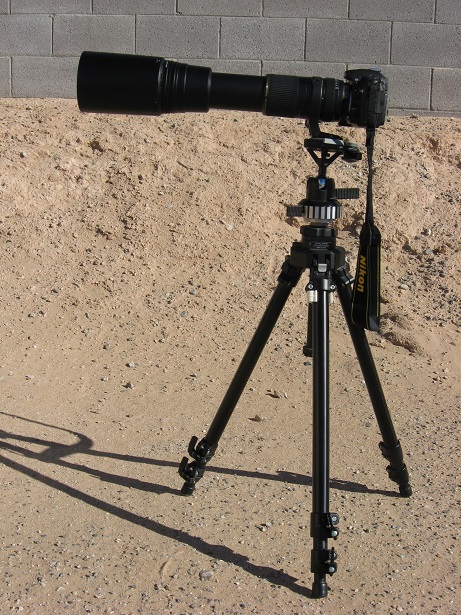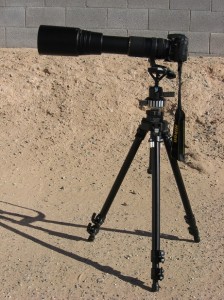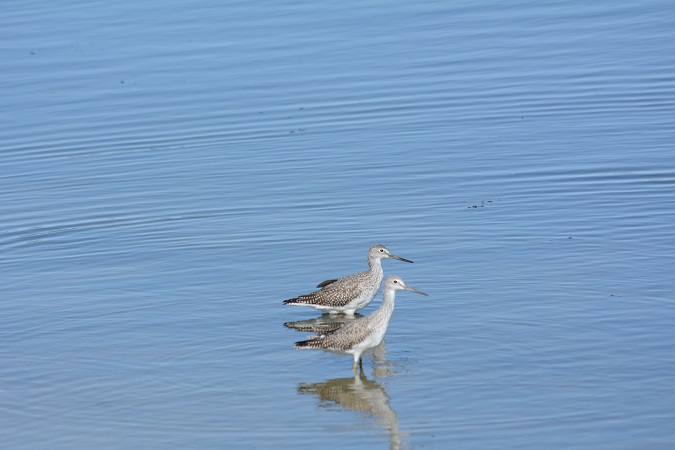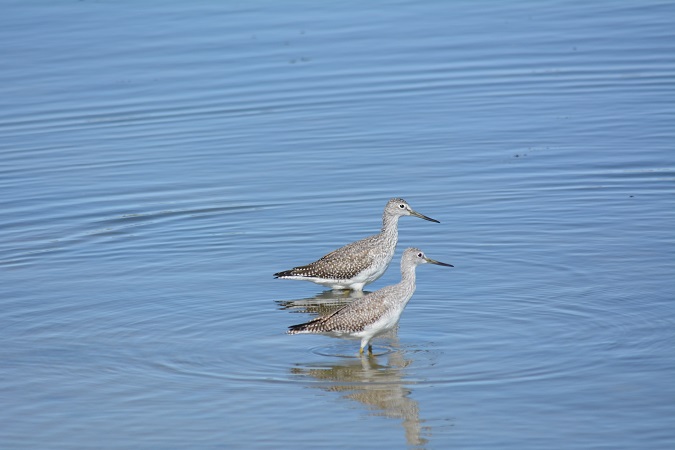
 Buying a Telephoto Lens
Buying a Telephoto Lens
If you want to photograph birds and other wildlife, you need a longer lens than the standard with most cameras. Of course, you must have a camera with interchangeable lenses. But which lens to buy? Here are some basic facts about purchasing a telephoto lens.
Focal Length
The lens’s focal length is the magnification or “reach” that will make objects in the picture appear closer than they would with a shorter lens. (Technically, it is the distance, measured in millimetres, from the optical centre of the lens to the sensor in the camera when the lens is focussed at infinity). In simple terms, the bigger the number, the closer the object will appear. For example, a 400 mm lens will make objects appear much closer than a 100 mm lens. A telephoto lens could be a fixed length, called a prime lens, or it could be adjustable, called a zoom lens. A telephoto zoom lens might give you a choice of lengths from 100 to 600, for example. If you photograph a small bird with a 100mm lens, it might appear only as a tiny dot in the middle of your photo. Whereas with a 400mm lens, the bird will appear much closer and larger.


The photo on the left was shot at 400mm, and the one on the right at 500mm. As you can see, each 100 mm makes a significant difference.
The lens makes objects appear closer by cutting down on the angle of view. The shorter the lens, the wider the angle of view. If you want to photograph a picture of a valley in the mountains or the Aurora Borealis, you should use a very short, wide-angle lens. To make objects larger in the photo, you need a narrow-angle view.
Maximum Aperture
The maximum aperture (called F stops) of the lens determines the amount of light that the lens can gather. There should be two of these numbers, or F stops, printed on the lens. The first number is the aperture when the lens is closed, and the second number is the aperture when the lens is fully extended. So, for example, a telephoto zoom lens with a maximum range of 5 to 6.3 means that you need an average amount of daylight when the lens is at its smallest zoom, but you will need plenty of light when the lens is extended to its maximum zoom.
A lens with a range of 4.5 to 5.6 will require less light than the previous example. On a cloudy day or if photographing birds in a dark forest, the lens in the first example may not have enough light to get a photo. (You could put the camera on a tripod and open the aperture to get more light, but birds often do not stick around long enough to do this).
Ideally, you want a lens with a max F stop of about 2.8, but this type of lens is costly.
Basically, the smaller the F-number, the more you will be able to use the lens in low-light conditions. Large numbers, such as 6.3, require a lot of light to get decent photos.
Weight
If you will be carrying the lens around all day or hiking up a mountain, the weight would be a significant factor to consider. However, if you are constantly using it on a tripod and not carrying it anywhere, this is not important.
Vibration Reduction
If you are hand-holding the lens, you should get one with Vibration Reduction. This helps stop blurred images due to the movement of the lens in your hands. I think that all new lenses now have this technology. Vibration reduction has several different names, depending on the manufacturer. Each company likes to have its unique name for this feature.
- Nikon – Vibration Reduction (VR)
- Canon – Image Stabilization (IS)
- Tamron – Vibration Control (VC)
- Sigma – Optical Stabilization (OS)
- Sony – Optical Steady Shot (OSS)
Vibration Reduction should be turned off when using the lens on a tripod. If it is on when there is no movement, the lens may detect minor vibrations within the camera mechanism, such as the mirror movement. This will cause the lens to work much harder, trying to reduce the effects of this tiny vibration.
Manual Focus
Although autofocus is excellent, make sure that the lens also operates on manual focus. Sometimes, autofocus does not work the way you want it to. For example, the lens might focus on the branch instead of the bird. Sometimes, the only way around this is to use manual focus.
Lock
Also, ensure the lens has a lock to prevent it from extending when you are not using it.
Other considerations
Minimum focusing distance. Telephone lenses are mainly used for photographing objects located far from the camera. What is the minimum distance that it will focus on close objects?
Quality of the glass. Some companies produce better quality lenses than other companies. Will the image be sharp? Will it be sharp at all focal lengths? Some lenses are sharp at some focal lengths but not when the lens is fully extended.
Thread size. To purchase filters and caps, you will need to know the size in millimetres of the front of the lens. One thing to consider is whether the filters you already own will fit on your new lens or if you will need to buy new ones.
Price
One major factor that I have not discussed very much is the price. A lens with a maximum aperture of F2.8 would be excellent but extremely expensive. Some lenses can cost as much as $20,000. The cheapest telephoto lenses of 400mm or more are in the range of about $1,200. The best would be nice, but, of course, you have to consider your budget.
So which one to buy?
Read unbiased reviews on the internet by people who have used the lens you are considering (not the company that manufactures it nor dealers who want to sell it, which will say that it is terrific). An excellent method of choosing a lens is to rent one and try it out before buying. Most large cities have camera dealers who will rent cameras and lenses.
Cameras and Equipment Reviews
One of the best websites for camera and equipment reviews is that of Ken Rockwell.